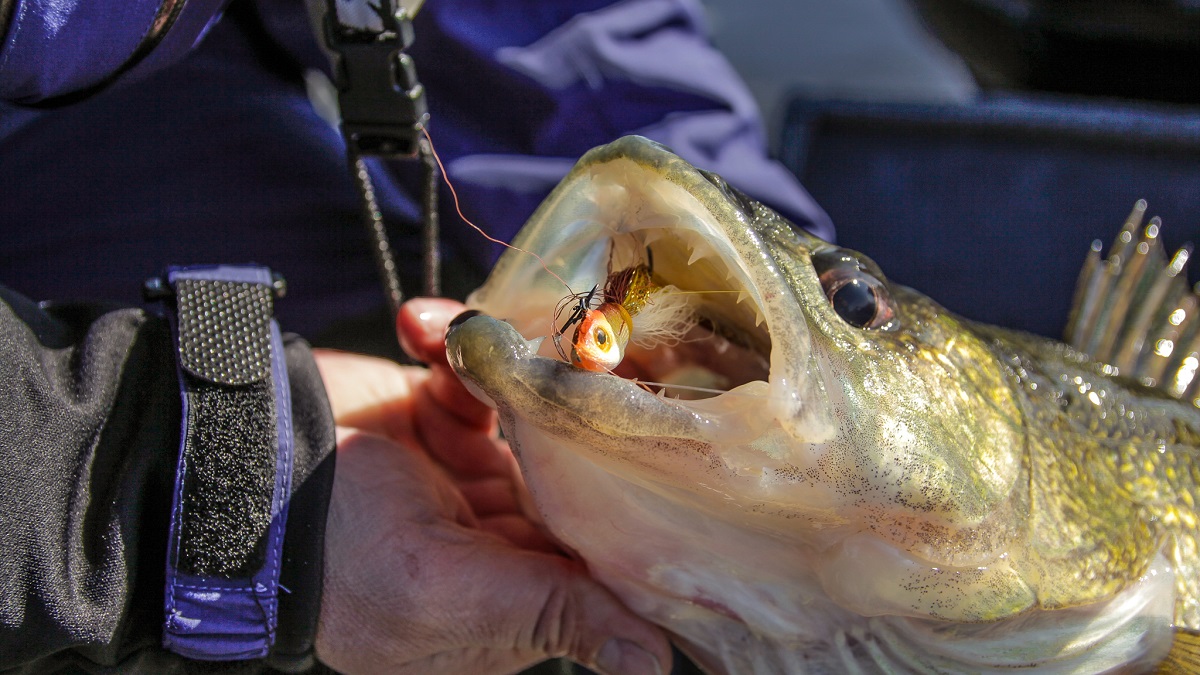It’s that in-between time period when ice fishing is no longer safe and the fishing season has yet to begin. We have all encountered this if we are addicted to fishing and live in the upper Midwest. Likewise, there isn’t much to hunt besides coyotes and some other small game species. So what do you do? Well the answer is simple – fish the rivers!
 Fishing the Mississippi River
Fishing the Mississippi River
Many river systems keep walleye seasons open year-round and with generous limits. To top it off, our river systems usually don’t freeze up completely and are often the first to shed their ice. As a word of caution, if you do plan on hitting the rivers you’ll need to keep an eye out for chunks of backwater ice floating down the river. The floating ice masses can make navigating difficult and often times unsafe, but this period of time usually passes within a day or two depending on Mother Nature.
During the months of March and April, you can bet the river systems gain a lot of attention from local walleye anglers. In recent years, jumbo perch have gained a lot of interest during early spring on the Mississippi river as well. Perch are considered to be a pan fish, which on the Mississippi river, the season doesn’t close and possession limit is a healthy 25 per person. Perch are a close relative to Walleye, but don’t get as big in their lifetime. But when a perch gets as big as a football, you have any angler’s attention!
 The author with a nice jumbo perch he caught on the Mississippi river
The author with a nice jumbo perch he caught on the Mississippi river
Target Areas
So, how does a person go about catching them? One tip is to pattern them based on water temperatures. During the early spring after ice out, plant life is mostly non-existent, so oxygen levels within the water are depleted. The water is cold and fish know they need to feed as their spawning seasons are fast approaching. Schools of perch and walleye will stage up in bays that still hold some underwater plant life. The plant life equates to forage in the forms of various underwater bugs and small baitfish, as well as healthier oxygen levels. As the water temperature creeps towards 40 degrees, perch and walleye can be found in slack water near heavier current areas. Dams are a perfect place for this because of the increased oxygen levels and stirred up water, which creates food for baitfish, which in turn are food for perch and walleye. As the water continues to warm up, perch and walleye will stage in rocky and sandy bottoms to spawn.
Rigging & Tackle
“The key to catching fish now lies in being able to get your bait to the bottom of the river.”
One challenge that arises while fishing in heavier current is rigging and technique. I have found over the past couple years that having a sensitive spinning rod lined with a hi-visibility colored 30-pound braided line helps me feel the bite better. Because a river has very stained water, line color doesn’t matter to me under the water, but it allows me to see it better from the boat or shore. I prefer a medium light rod for perch and walleye on the Mississippi river because we are usually jigging heavy jig heads or river rigs, sometimes over 1 oz. in weight. Finding jig heads or rigs can be a real challenge, as these are specialty setups for waters like the Mississippi river. A quick stop by a good local tackle shop will have them on hand and will answer any questions you might have.
 Pictured above is a river rig setup – notice the trailer/stinger hook placed in the crawler.
Pictured above is a river rig setup – notice the trailer/stinger hook placed in the crawler.
The key to catching fish now lies in being able to get your bait to the bottom of the river. That’s where experimenting and time on the water will pay off in the long run. In my Plano tackle bag, I carry trays of bucktail jigs, Rippin Shads, Puppet Minnows, lead jig heads, and pre-rigged river rigs. The heavier the current, the more weight it will take to get to the bottom. I often fish near the shorelines of the dam in slack current. Depending on how close you are to the dam itself, will determine how heavy of a jig head or river rig you will need. I tend to have more ¾ oz and 1 oz weights on my river rigs. Your needed weight will vary on your fishing location. You can easily make a river rig yourself with some 10-15 pound fluorocarbon line, a three-way swivel, weight, and hook or floating jig head. Top your hook off with a live minnow or night crawler with a trailer hook. Be sure to leave a tail for added action, but I have found a trailer hook helps tremendously with hooking percentages, especially during this time of year when fish are less aggressive.
When fishing a river system, you never know what you will catch. Many fish species live in the Mississippi river, and feed on bait on the bottom. Just remember your bait, no matter what it may be, needs to get there. Whether you choose to fish from shore, from a boat, or from a fishing float located near many of the dams on the Mississippi river, have fun and good luck!








